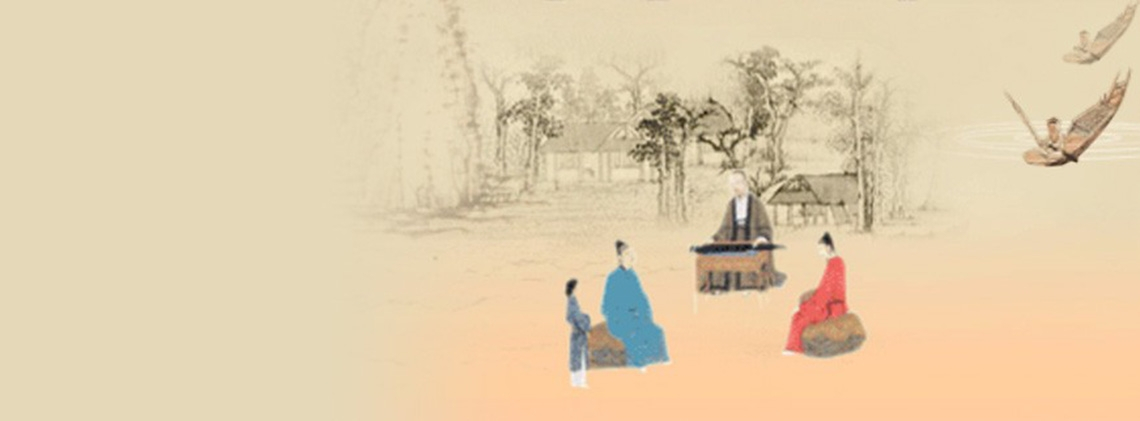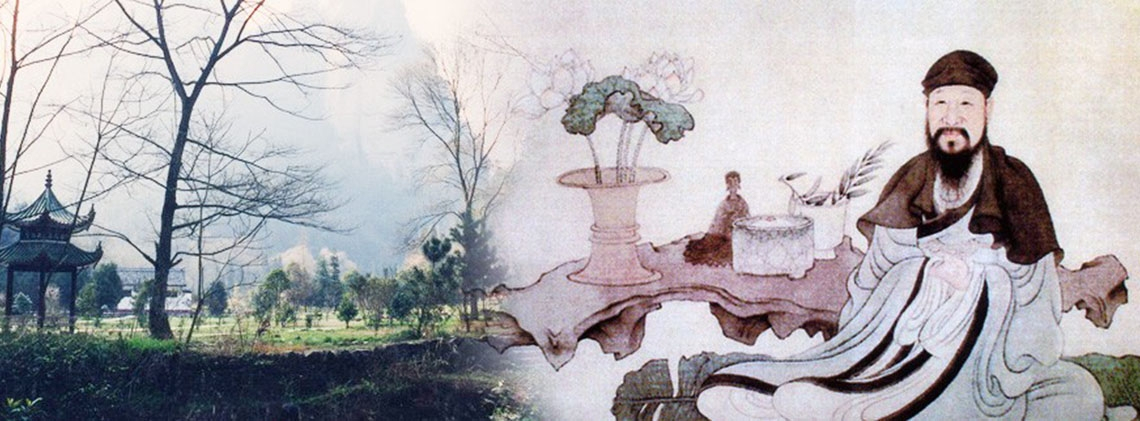
中國繪畫藝術
Splendid
Chi Culture
Topic
The Art of Chinese Painting
The history of Chinese painting dates back over five thousand years when petroglyphs, pottery ornamentations, and pictures incised on utensils first appeared. Paintings on silk that were made two thousand years ago during the Warring States period (476–221 BCE) have been unearthed which demonstrate that a mature style of Chinese painting was already developed at this early date.
Ancient Chinese paintings were initially created by craftsmen. After the Three States period (220–280), more and more erudite scholar-officials took up painting. By the Northern and Southern Dynasties (420–589), there emerged such master painters as Gu Kaizhi, Lu Tanwei (?–485), and Zhang Sengyou (fl. 500–550).
Gu Kaizhi (348–409), one of the first eminent Chinese painters to be known by name, is renowned for his masterpiece Luoshen fu (Rhapsody on the Luo River goddess ), which was inspired by the poem of the same title composed by Cao Zhi (192–232), son of Cao Cao (155–220) of the Three Kingdoms period . Set against a picturesque landscape, the painting depicts the romantic encounter between the poet and the water goddess, and alludes to the unattainability of love between a mortal and an immortal. The original scroll was unfortunately lost; however, five copies, made by painters during the Song dynasty (960–1279), have survived and are well preserved. Gu Kaizhi is also remembered as a painting theorist, whose emphasis on the vivid depiction of the eyes in figure painting is still observed by modern artists.
The Tang dynasty (618–907) produced an unprecedented amount of literary and artistic talent. A vast quantity of the excellent paintings created during the high Tang period served as records of the daily life of both the imperial court and of commoners.
As China’s cultural exchange with the outside world increased as a result of the Silk Road, Buddhist-themed paintings proliferated. There are over two hundred mural-decorated grottoes at Dunhuang; it is in these caves that the largest number of paintings from the Tang dynasty survive.
The Song emperors were strenuous advocates of culture and the arts; their policies fostered numerous renowned litterateurs and poets. Many of these emperors also had a passion for painting and on this account, the Imperial Painting Academy abounded with talent. Chinese imperial painting peaked during the Northern Song period with the appearance of the famous painting Qingming shanghe tu (Riverside scene at Qingming Festival) by the imperial court painter Zhang Zeduan (1085–1145). Although deemed a poor emperor by later generations, Zhao Ji (Emperor Huizong, 1082–1135) is widely acknowledged as a great painter. He left many excellent paintings, along with his invention of a new type of calligraphy called “slender gold,” which is still practiced by many calligraphers today. The Song dynasty literary giant Su Dongpo (1037–1101) was known as a great master not only of literature but also of calligraphy and painting.
A galaxy of literati and painters continued to emerge after the Song dynasty. Regional styles of painting, such as Songjiang, Xin’an, Huangshan, and Lingnan schools, to name just a few, appeared during the Ming dynasty (1368–1644).
Chinese painting emphasizes spirit over appearance, and painters strive to convey their feelings through their works. Painters were expected to be highly cultured and to exercise their imagination through careful observation of their environment. One distinctive feature of Chinese painting is the attention paid to the character and the inner qualities of artistic figures.
There are three broad categories of Chinese painting: figure painting, landscape painting, and flora and fauna painting. Some painters excel in all three, but the majority specialize in one type only. Created with ink brushes on high quality Xuan paper, a Chinese painting is customarily inscribed with calligraphy, and stamped with the painter’s seal at its finish. A fine piece of Chinese painting is evaluated in terms of its inscription, its calligraphy, the quality of the picture, and the seal. It may be mounted on either horizontal or vertical scrolls, as well as in albums, or on the leaves of a fan. The horizontal scroll, also known as the hand scroll, can be appreciated incrementally as one unscrolls it, but it is inconvenient for hanging. A vertical scroll is one that can be hung on a wall. Albums are sheets of calligraphy, painting, or rubbings made of inscriptions bound as books. Finally, fan leaves may be from either circular or folding fans.
Modern history has seen the introduction of Western painting into China. Many famous Chinese painters, such as Qi Baishi (1864–1957), Huang Binhong (1865–1955), Pan Tianshou (1897–1971), and Chang Dai-chien (Zhang Daqian, 1899–1983), endeavored to absorb Western techniques while remaining true to the principles and cultural essence of traditional Chinese painting.





